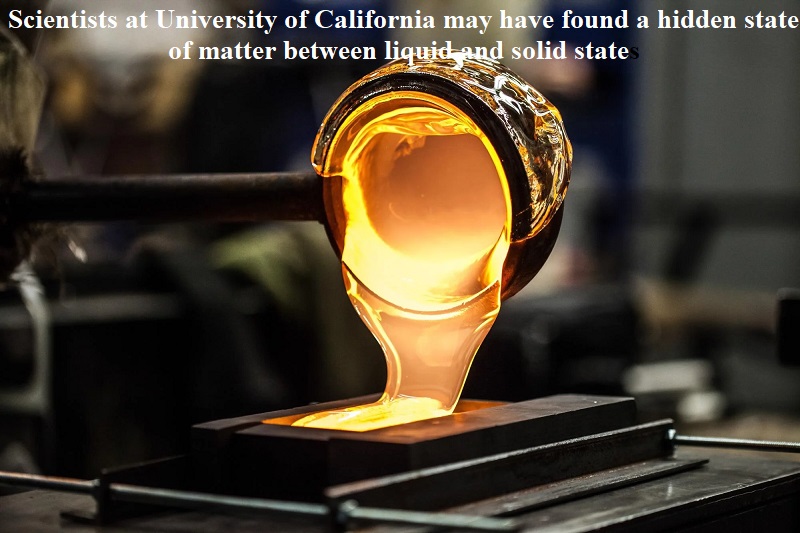
Researchers at the University of California, Berkeley, claim to have identified an enigmatic state of matter that exists between the conventional liquid and solid states. The complexity of the particle arrangement in this newly-discovered state presents a challenge for a straightforward explanation.
This peculiar state of matter is thought to share similarities with amorphous solids, which are intricate combinations of solids and liquids. Glass serves as a classic example of an amorphous solid. Despite its appearance as a stable solid, when scrutinized closely by scientists, the particle arrangement within glass resembles that of a liquid in a state of free fall, frozen in time.
In our surroundings, matter typically exists in one of three states: solid, liquid, or gas. Each of these states possesses distinct properties and atomic arrangements. Transitions between these states, such as a solid melting into a liquid or a liquid transforming into a gas, are known as phase transitions. However, matter’s behavior extends beyond these fundamental states.
Scientists Dimitrios Fraggedakis, Muhammad Hasyim, and Kranthi Mandadapu from UC Berkeley propose the existence of an intermediate state between liquids and solids, characterized by an arrangement of particles that was previously unknown.
This newly proposed state of matter is believed to manifest at the temperature boundary between supercooled liquids and solids, where particles remain statically excited and appear to be “twitching” in position.
Utilizing computational modeling and simulations, along with insights from previous experiments, Fraggedakis, Hasyim, and Mandadapu suggest that this transition is not as straightforward as initially thought. Rather, it involves a unique behavior of particles that resides between the conventional liquid and supercooled states.
Mandadapu explains, “Our theory predicts the onset temperature measured in model systems and explains why the behavior of supercooled liquids around that temperature is reminiscent of solids even though their structure is the same as that of the liquid.”
This phenomenon, referred to as the “onset temperature for glassy dynamics,” is akin to a melting temperature that transforms a supercooled liquid into a regular liquid. The researchers applied this concept to a 2D supercooled liquid, treating its excitations as defects in a crystalline solid and analyzing their behavior with changing temperature.
The team believes that their model could be extended to comprehend this transition in three dimensions as well, offering a theoretical framework for future experimental investigations.
Mandadapu reflects, “The fundamental goal is to microscopically comprehend the distinction between supercooled liquids and high-temperature liquids. Exploring why these supercooled liquids display significantly distinct dynamics from familiar liquids is captivating from a foundational scientific perspective.”

Post Your Comments